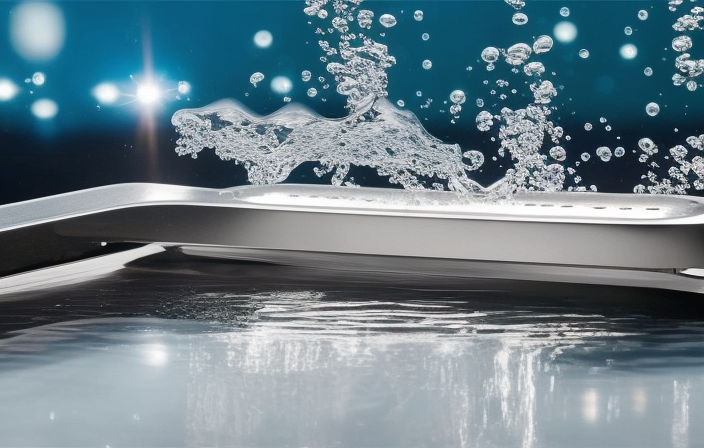Fiber optic technology has revolutionized the way we transmit high-quality video and audio signals.
With its ability to transmit data at incredibly fast speeds and over long distances without any loss in quality, fiber optic cables have become the gold standard for audiovisual professionals and enthusiasts alike.
In this article, we will delve into the world of fiber optic HDMI cables and discuss the factors to consider when choosing the best one for your needs.
When it comes to selecting a fiber optic HDMI cable, there are several important factors to keep in mind. The first is the cable’s transmission speed, which determines how quickly data can be transferred between devices.
A higher transmission speed ensures smooth and uninterrupted audio and video playback, especially when dealing with high-definition content.
Additionally, the length of the cable should be considered, as longer cables may experience signal loss if not properly equipped with signal boosters or repeaters.
Lastly, it is crucial to select a cable that is compatible with the devices you intend to connect, ensuring a seamless connection and optimal performance.
By carefully considering these factors, you can ensure that you choose the best fiber optic HDMI cable to transmit high-quality video and audio signals.
Key Takeaways
- Fiber optic HDMI cables revolutionize high-quality video and audio transmission by delivering pristine signals without degradation or interference.
- These cables are ideal for home theater systems and professional installations, providing dependable and reliable performance in various environments.
- Fiber optic HDMI cables offer superior signal quality compared to copper cables, transmitting data over long distances without loss in quality and being immune to electromagnetic interference.
- Despite the initial higher cost, high-quality fiber optic HDMI cables are a worthwhile investment, offering future-proofing capabilities and justifying the investment with their performance and longevity.
Understanding Fiber Optic Technology
The intricate workings of fiber optic technology allow for the seamless transmission of high-quality video and audio, igniting a sense of wonder and appreciation for the advancements in modern communication.
Unlike traditional copper cables, fiber optic cables use light pulses to transmit data, resulting in several advantages. One major advantage is the ability to transmit data over long distances without any loss in signal quality.
Copper cables, on the other hand, suffer from signal degradation over longer distances, leading to a decrease in video and audio quality.
This makes fiber optic cables the ideal choice for transmitting high-definition content over long distances, such as in large venues or broadcasting networks.
Another advantage of fiber optic transmission is its immunity to electromagnetic interference (EMI). Copper cables are susceptible to EMI from nearby electrical devices, which can introduce noise and distort the transmitted signals.
Fiber optic cables, however, are made of glass or plastic fibers that are not affected by electromagnetic fields.
This ensures that the audio and video signals remain clear and free from any interference, resulting in a superior viewing and listening experience.
Additionally, fiber optic cables are also thinner and lighter than copper cables, making them easier to install and manage.
Fiber optic technology offers significant advantages over traditional copper cables for transmitting high-quality video and audio.
The ability to transmit data over long distances without signal degradation and immunity to electromagnetic interference make fiber optic cables the preferred choice in various applications.
Whether it is for large-scale broadcasting networks or home entertainment systems, fiber optic cables provide a reliable and efficient means of transmitting high-definition content.
As technology continues to advance, fiber optic technology will undoubtedly play a vital role in meeting the ever-increasing demand for high-quality video and audio transmission.
Factors to Consider When Choosing a Fiber Optic HDMI Cable
One crucial aspect to consider when selecting a fiber optic HDMI cable is the extent to which it can effectively transmit pristine visual and auditory signals.
Fiber optic cables have the advantage of being able to transmit high-quality video and audio over long distances without any loss in signal quality.
Unlike copper cables, which are prone to interference and signal degradation over longer lengths, fiber optic cables use light signals to transmit data, resulting in a clean and reliable transmission.
This makes fiber optic HDMI cables ideal for applications where high-definition video and audio are essential, such as home theater systems, conference rooms, and professional audio/video installations.
When choosing a fiber optic HDMI cable, the length of the cable is an important factor to consider. The length of the cable will determine the maximum distance over which the signal can be transmitted without any loss in quality.
It is crucial to choose a cable that is long enough to reach the desired devices while still maintaining the integrity of the signal.
Longer cables may require higher quality materials and construction to ensure the signal remains strong and stable.
Additionally, it is important to consider the installation environment and any potential sources of interference that may affect the performance of the cable.
By taking into account the length of the cable and the specific requirements of the installation, one can ensure that the fiber optic HDMI cable chosen will effectively transmit high-quality video and audio signals.
- Superior signal quality compared to copper cables
- Ability to transmit over long distances without signal degradation
- Ideal for high-definition video and audio applications
- Resistance to interference and electromagnetic interference
- Dependable and reliable performance in various installation environments.
Benefits of Using a Fiber Optic HDMI Cable
Utilizing fiber optic technology for HDMI transmission offers numerous advantages, including the ability to transmit data over long distances without signal degradation or interference.
Unlike traditional copper cables, fiber optic cables use light signals to transmit information, resulting in a more reliable and high-quality transmission.
The use of fiber optic HDMI cables ensures that the video and audio signals maintain their integrity, delivering a crisp and clear picture and sound.
This is particularly important for high-definition content, where any loss or distortion of data can significantly impact the viewing experience.
One of the key features of fiber optic HDMI cables is their ability to transmit signals over long distances without any loss in quality.
Traditional copper cables are limited in terms of the distance they can transmit signals without experiencing signal degradation.
In contrast, fiber optic cables can transmit signals over much longer distances, making them ideal for large installations such as auditoriums, conference rooms, or stadiums.
Additionally, fiber optic cables are immune to electromagnetic interference, which can be a common problem with copper cables.
This means that fiber optic HDMI cables provide a more stable and consistent signal, ensuring a seamless viewing experience without any disruptions.
The use of fiber optic HDMI cables offers significant advantages in terms of signal transmission. Their ability to transmit data over long distances without signal degradation or interference ensures a reliable and high-quality viewing experience.
The features of fiber optic cables, such as their long-distance transmission capabilities and immunity to electromagnetic interference, make them an ideal choice for installations that require a stable and consistent signal.
By utilizing fiber optic technology, users can enjoy the benefits of high-definition video and audio without any compromise in quality.
Top Fiber Optic HDMI Cable Recommendations
Among the top recommendations for fiber optic HDMI cable options are brands that have been recognized for their exceptional performance and reliability in transmitting signals over extended distances, ensuring a seamless viewing experience for users.
When it comes to HDMI cable compatibility, these top recommendations offer full compatibility with the latest HDMI standards, including 4K Ultra HD, HDR, and Dolby Vision.
This means that users can enjoy the highest quality video and audio, with vibrant colors, sharp details, and immersive sound, all delivered through a single cable.
In terms of price range comparison, these top fiber optic HDMI cable recommendations may vary in price, depending on the brand and length of the cable.
However, it is important to note that investing in a high-quality fiber optic HDMI cable can be beneficial in the long run.
These cables are built to last, with durable materials and advanced technology to ensure reliable performance. They also offer future-proofing capabilities, meaning they can support upcoming advancements in video and audio technology.
While the initial cost may be higher compared to other HDMI cable options, the superior performance and longevity make them a worthwhile investment for those who value high-quality video and audio transmission.
Conclusion
In conclusion, choosing the best fiber optic HDMI cable is crucial for transmitting high-quality video and audio.
By understanding fiber optic technology and considering factors such as cable length, bandwidth, and compatibility, users can make an informed decision.
The benefits of using a fiber optic HDMI cable are numerous, including improved signal quality, longer transmission distances, and immunity to electromagnetic interference.
To illustrate the importance of a fiber optic HDMI cable, imagine a group of friends gathering for a movie night.
They eagerly set up their home theater system, excited to enjoy a cinematic experience. However, as the movie starts, they are disappointed to find that the video and audio quality is subpar, with frequent pixelation and audio dropouts.
Frustration sets in as they realize that their traditional HDMI cable is not able to handle the high bandwidth required for high-definition content.
Now, picture the same group of friends, but this time they have upgraded to a fiber optic HDMI cable. As they start the movie, they are amazed by the crystal-clear video and immersive audio that fills the room.
The fiber optic cable effortlessly transmits the high-quality signals, ensuring that they can fully enjoy the movie without any interruptions or compromises in quality.
It is like watching a movie in a state-of-the-art theater, right in the comfort of their own home.
In conclusion, investing in a fiber optic HDMI cable is essential for anyone looking to transmit high-quality video and audio.
By understanding the technology, considering important factors, and reaping the benefits of improved signal quality and longer transmission distances, users can elevate their home entertainment experience to new heights.
Just like upgrading from a standard cable to a fiber optic one can transform a movie night, choosing the best fiber optic HDMI cable can enhance the overall audiovisual experience and bring it closer to a professional-grade setup.




Leave a Reply